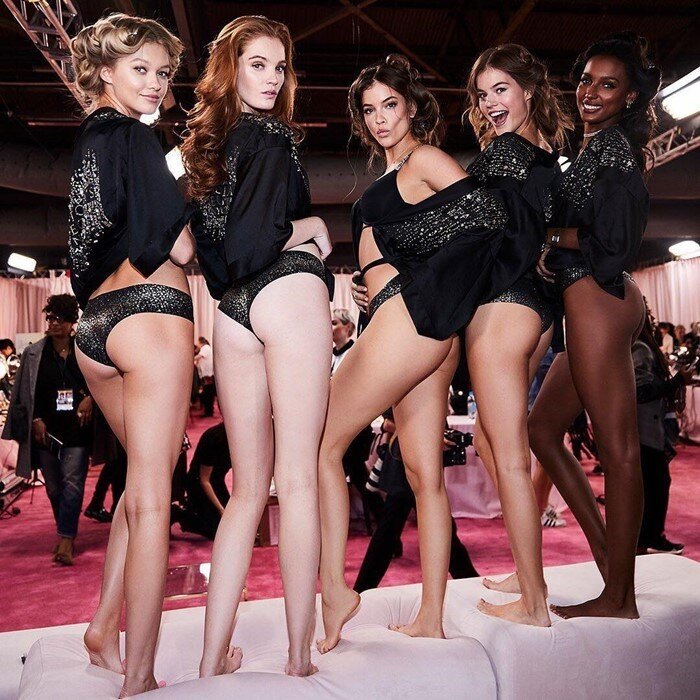Victoria’s Secret’s Brand Repositioning
For decades, Victoria’s Secret has been known for sexy lingerie and models with only one body type: a tall, exceptionally thin physique that is not realistic for most (nearly all) real women. While the brand was considered iconic and seemed successful for a long time, there were eventually indications of decline, including canceling their annual fashion show, store closings, and sexual harassment claims. Now, the brand seems to be making an effort to improve its image by getting rid of its famous “angels” and going for a more women-empowerment, body-positive marketing strategy.
The first mainstream indication of Victoria's Secret’s downward dive in popularity was when their 20yr+ annual fashion show was canceled in 2019. While the show was famous for its sparkling lingerie and huge wings on the doll-like “angels,” the show was shut down by L Brands, Victoria’s Secret and Bath & Body Works’s parent company. According to Elaine Low on variety.com, L Brands’s goal in canceling the show was to “‘evolve the marketing’ of its signature lingerie brand, and the show itself had no immediate impact on sales of its bras and underwear.” The article also explained that the show’s ratings had already been declining, and the brand was faced with controversy when Ed Razek, the former marketing chief, made offensive comments regarding transgender and plus-size models.
However, the most obvious sign that Victoria’s Secret is not as successful as it once was is all the store closings. In 2020, they closed 241 of their retail stores, and up to 50 more of their stores will close this year as well, according to CNN Business.
Furthermore, the New York Times article “‘Angels’ in Hell: The Culture of Misogyny Inside Victoria’s Secret” exposed dark stories and secrets of sexual harassment and abuse of power that had been going on within Victoria’s Secret in the glowing days of the ‘Me Too’ . New York Times pointed at Razek and his allegations of attempt to kiss and inappropriately touch the models, and threats that they would receive fewer modeling opportunities for refusing his advances. For instance, model Andi Muise stated he tried to kiss her on advances. He sent her predatory emails, and as a result of her saying no, she was left out of the 2008 fashion show. Razek also made inappropriate comments about supermodel Bella Hadid’s breasts. Adding to the controversy, Leslie Wexner, L Brands’s founder and chief executive, had ties with the notorious Jeffrey Epstein, as Epstein once managed Wexner’s money and would pretend to be a recruiter for Victoria’s Secret to lure women.
Now, Victoria’s Secret plans to make a comeback by attempting to transform their brand from a male fantasy to an image of what real women want. Victoria’s Secret is no longer part of L Brands, and according to the New York Times article, “Victoria’s Secret Swaps Angels for ‘What Women Want.’ Will They Buy It?” by Sapna Maheshwari and Vanessa Friedman, the new chief marketing officer is a woman named Martha Pease. The article explains that rather than “angles,” the new faces of the brand will be the VS Collective, which is made up of female athletes, activists, and other accomplished women, including Megan Rapinoe, Eileen Gu, Paloma Elsesser, Valentina Sampaio, Adut Akech, Amanda de Cadenet, and Priyanka Chopra Jonas. Even the mannequins in the stores will become more size-inclusive.
There is no doubt that there will be a variety of reactions to Victoria’s Secret’s brand repositioning. Looking at some comments already, some people seem to find the new changes empowering and exciting, while others perceive the new brand image as a desperate attempt to appease society. While people have mixed feelings about the brand’s repositioning, time will tell whether Victoria’s Secret will find success in this new image.
By Zoe Nolz


